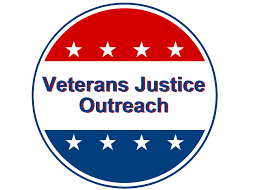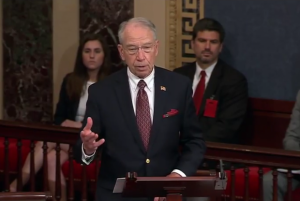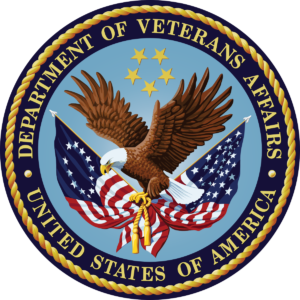The Fisher House Foundation: Watch Your Dollars Work
Contributed by Kris Baydalla-Galasso
9 Million days of lodging
86 Houses in operation
368,000 Families serviced in the past 30 years
$451,000,000 in savings to families of injured soldiers
It’s about to be the most wonderful time of the year – a time for holiday parties and get-togethers, for making lists and checking them twice. In your holiday planning this year, take a moment to remember the organization that gives 93% of every dollar raised back to our servicemen, women and veterans: The Fisher House Foundation.
It is always a pleasure to talk to Ken Fisher, Chairman and CEO of The Fisher House Foundation. A native New Yorker, just the sound of Ken’s voice brings me back home. Just a few minutes into our call, he has my mind racing and my heart pounding with excitement, as his own excitement is contagious to anyone who takes a moment to listen.
Our call this week was specifically about adaptive sports and their importance in the world of healing. Our house is a hockey house – and several members of my family are involved with sled hockey, an adaptation that gives the sport a seat – in a specially designed sled that allows participants to play the game without needing legs.
There is no arguing the benefits of adaptive sports for wounded veterans. These men and women spent most of their careers in top physical shape and a profound injury is life-altering in so many ways. Adaptive sports can provide not only a path to healing – but an outlet for relationship building and friendships with other people who have faced the same physical limitations, difficulties and severity of recovery.
Adaptive sports are just some of the many services available through the numerous Fisher Houses across the country. All of the services available through the Fisher House Foundation have the same goal: improve the life of the wounded warrior so that warrior can heal.
The Fisher Houses across the country ensure that the families of the wounded can be near them while they heal. Having the loving support of family nearby is proven to help with the healing process.
There are six Fisher Houses under construction right now – New Orleans, LA, Ann Arbor, MI, Omaha, NE and Huntington, WV are all getting their first Fisher House. Denver, CO is getting their existing Fisher House replaced and Richmond, VA is seeing a second Fisher house built to help address the needs of the population in that community. These houses are being built now – but there are more on the horizon as the Fisher House program continues to grow. Togus, ME and Albuquerque, NM have houses planned for the near future.
The integrity of the Fisher House Foundation is unquestionable. The services provided are invaluable. It is inarguably worthy of your charitable dollars this holiday season, and any other time of year. Giving to the Fisher House Foundation is easier than you think – in fact, there are many ways to give. I personally set up my Amazon Smile account to benefit The Fisher House Foundation – and while my personal contribution hasn’t been outrageous just yet, the organization has received nearly $90,000!

You can help make an impact this holiday season. Visit the Fisher House Foundation website to see how you can make a difference in the lives of our healing veterans!
GI Benefits In Limbo
If you have been attempting to use your GI Benefits lately, you might already know what thousands of Veterans are finding out – your GI Benefits just aren’t coming.
In a technological glitch and resulting nightmare, the VA is experiencing a huge backlog which started after President Trump’s signing of the Forever GI Bill last year. The 2017 legislation expanded benefits for Veterans and their families. However, with bill did not provide for a change in the system infrastructure. The result? A technological bottleneck that has delayed payments to recipients across the country. Initially, the VA was given until August 1, 2018 to put the 34 new provisions in place. That deadline was missed but the promise to hit a mid-August deadline was made. This goal was also missed.
During this week’s Veterans’ Affairs Committee hearing, Senator Johnny Isakson (R- GA) had the following to say:
“The changes that should’ve been made in information technology weren’t made. The checks and balances we have built into the system weren’t followed.”“It’s come to my attention that the [VA] has screwed up accountability and responsibility for a Forever GI Bill benefit. The changes that should’ve been made in information technology weren’t made. The checks and balances we have built into the system weren’t followed.”
The checks and balances weren’t followed and the results are nearly catastrophic.
According to the VA, at least 82,000 recipients are currently awaiting housing payments. While that number is astronomical, the true number of impacted Americans is unknown. It is estimated that the number is actually in the hundreds of thousands. All involved parties agree that this non-partisan issue needs to be rectified, Representative Phil Roe (R – TN), the chairman of the House Committee on Veterans Affairs, has been quoted as saying “this is, to be kind, a train wreck.” The train wreck continues to take out more collateral damage with every passing day as an increasing number of Veterans find themselves in dire straits without the benefits that they have been promised and were expecting.
While the VA has acknowledged the problem, which first began rearing its ugly head this past summer, there is no concrete or conclusive plan in place to actually fix the debacle. Worse yet, VA officials were warned by advocates and lawmakers that this would happen prior to the system collapse.
Dr. Paul R. Lawrence, top-ranking benefits’ official for the VA, appeared in front of the House Veterans’ Affairs Committee on Thursday and obviously struggled as he attempted to explain the situation and lack of progress. Estimates have been provided previously and remain unmet. At this time, Lawrence claimed the previous timetables were a “mistake” and the VA had no current estimate for when the technological issues might be resolved.
While outdated technology is plaguing the VA in their fulfillment of GI Benefits, it is nearly destroying Veterans who are supposed to be supported by those benefits. With just weeks left to the fall semester, many Veterans find themselves crippled with unexpected housing and academic costs. Heartbreaking stories of Veterans in crisis at the hands of the GI BIll program are popping out of the woodwork every day.
Dan Gorman, former sailor and NY National Guardsman is just one of those stories. Gorman was scheduled to graduate in May 2019, but with the current delays crippling his finances, that goal seems less and less likely every day.
“I can’t afford rent. I can’t afford groceries. It’s a lot of emotional strain and aggravation,” said Gorman.
According to Curt Cashour, VA Press Secretary, the VA has implemented 28 of the 34 changes. However, housing and tuition and reimbursement were not two of them and no estimate was given for when the remaining changes would be completed.
The most unfortunate twist in this mishap is that the VA failed to notify students of the potential pitfalls, even after they were aware. Students, like Gorman and many others, have been waiting for their checks to arrive – but they never do. Given that two of the major changes that have not been rolled out are those that impact living allowances and tuitions, Veterans find themselves unable to afford both school and day-to-day survival.
According to the VA, an additional 200 IT-based employees have been added to staff to assist with the remaining rollouts. The VA has had a year to complete the required IT upgrades and is now nearly four months past the original due date. While the additional staff and pressure from the House may help push the project to completion, it is of little consolation for those Veterans who find themselves being forced to give up their education.
The VA’s GI Bill Hotline is 888-GIBill-1 and the White House VA Hotline is 855-948-2311. If you or someone you know has received an incorrect disbursement, is missing a stipend or reimbursement, please contact these hotlines for assistance.

The US Department of Veterans Affairs is Hiring!
The US Department of Veterans Affairs is looking to hire VJO Specialists.
VJO – or Veterans Justice Outreach – Specialists are responsible for providing justice-based assistance to veterans in need. The ultimate goal of the VJO program is to assist Veterans who find themselves in the court system when it is actually medical assistance of which they are most in need. These specialists are not attorneys, but instead advocates working to ensure that Veterans are properly treated.
The signing of the Veterans Treatment Court Improvement Act of 2018 requires VA to hire 50 additional VJO specialists to be placed throughout VA Medical Centers. These new specialists will serve as part of a justice team.
For more information, please visit: https://www.va.gov/HOMELESS/index.asp

Senators Back VA Whistleblower’s Claim of Harassment
Two Republican senators are defending a Department of Veterans Affairs whistle-blower and his claims of retaliation. Sen. Charles Grassley, R-Iowa, chairman of the Senate Judiciary Committee, and Sen. Ron Johnson, R-Wisconsin, chairman of the Homeland Security Committee, said that they were grateful to Kuauhtemoc Rodriguez for coming forward despite extreme personal risk.
The Phoenix VA Medical Center employee helped expose the doctoring of records that resulted in “serious patient waitlist improprieties.”
As a result, then-VA Secretary Eric Shinseki resigned. But also as a result, Rodriguez was subjected to bullying by his superiors. But then whistle-blowers across the nation started reporting their own VA horrors
“The retaliation allegations included moving the whistleblower to a closet re-purposed as an office without proper air conditioning for almost two years, unlawful access of his medical records, verbal and physical threats of violence and bullying, the vandalizing of his car and an ordered appearance before a review board in an attempt to fire him,” the two senators said.
When the scandal broke in 2014, senior managers at VA facilities were found to have instructed their staffs to deliberately cover up long waits for appointments.
“Sometimes whistleblowers expose matters of life and death, other times they expose harm against the taxpayers, and sometimes they expose all of the above,” Sen Grassley wrote in a release. “Kuauhtemoc Rodriguez of the Phoenix VA deserves praise and gratitude for coming forward about problems that cover all of the above.”

By Debbie Gregory.
Any time a veteran files a claim for disability that the Department of Veterans Affairs (VA) rejects, they have the right to appeal. But the average wait before a final decision is six years — and one service member has even waited 25 years. As a result, the number of pending appeals has increased sharply, rising in the past two years alone from 380,000 to now 470,000 pending appeals.
The first pilot program of the new law, the Appeals Modernization Act of 2017 called the Rapid Appeals Modernization Program (RAMP), is off to a slow start.
A lot of veterans have received information about, or invitations to join RAMP. The new law will be fully implemented in 2019, but in the meantime, the pilot program allows the VA to test how appeals will be handled in the future.
The law is meant to jump-start appeals reform within the Department of Veterans Affairs (VA), with an eye toward ending the backlog.
To date, VA has sent veterans 15,000 invitations to try out the new RAMP process. About 3 percent of those who have been contacted opted into the program.
But members of Congress and GAO said they were concerned that VA’s sample size for the pilot is too small.
“If you can’t gather and analyze the data, we’re just going to be whistling in the wind,” committee Chairman Phil Roe (R-Tenn.) said. “When we start this RAMP up full, essentially a year from now, this is a massive change in how things are done at the VA. With so few people … how do we encourage more veterans to switch to a system they know to one right now that’s new and untried?”
VA said it would continue to work with veterans service organizations and Congress to help encourage their members and constituents to consider trying the department’s new system.
So far, VBA has been processing those appeals within 37 days, and 61 percent of veterans have won their appeals — significantly higher than the 25 percent of veterans who typically earn a positive decision.
Once VA fully implements RAMP, veterans with high-level claims will have a decision in 125 days and cases that go to the Board of Veterans Appeals will be finished within about a year.
Military Connection salutes and proudly serves veterans and service members in the Army, Navy, Air Force, Marines, Coast Guard, Guard and Reserve, and their families.

By Debbie Gregory.
The Department of Veterans Affairs (VA) is often praised for the education benefits given to those who have served. But just as important, the VA strives to help servicemembers, veterans, and eligible surviving spouses obtain veteran home loans so that they may become homeowners.
An Interest Rate Reduction Refinancing Loan (IRRRL), often referred to as a “Streamline” or a “VA to VA” loan is a great option for providing veteran home loans.
A VA veteran loan provides a home loan guaranty benefit and other housing related programs to help buy, build, repair, retain, or adapt a home for personal occupancy. These loans are obtained through private lenders such as banks and mortgage companies. The VA guarantees a portion of the loan, enabling the lender to provide more favorable terms.
Except when refinancing an existing VA guaranteed adjustable rate mortgage to a fixed rate, it must result in a lower interest rate. When refinancing from an existing adjustable veteran home loan to a fixed rate, the interest rate may increase.
To decide whether it is beneficial to refinance your veteran home loan, the general rule of thumb is that if you can refinance and reduce your interest rate by 1% then it is something worth considering. However, it’s important to consider other factors, such as closing costs and how long you plan on living in the property.
An IRRRL may be done with “no money out of pocket” by including all costs in the new loan or by making the new loan at an interest rate high enough to enable the lender to pay the costs, but you must NOT receive any cash from the loan proceeds.
The occupancy requirement for an IRRRL is different from other VA veteran home loans. When you originally got your VA loan, you certified that you occupied or intended to occupy the home. For an IRRRL you need only certify that you previously occupied it. The loan may not exceed the sum of the outstanding balance on the existing VA loan, plus allowable fees and closing costs, including funding fee and up to two discount points. You may also add up to $6,000 of energy efficiency improvements into the loan.
One more thing to keep in mind is that an IRRRL can only be made to refinance a property on which you have already used your VA loan eligibility. It must be a VA to VA refinance, and it will reuse the entitlement you originally used.
Lenders are not required to make you an IRRRL, however, the lender of your choice may process your application for an IRRRL, and you do not have to go to the lender you make your payments to now or to the lender from whom you originally obtained your VA Loan.
Also keep in mind that the ability to reduce the term of your loan from 30 years to 15 years can save you a lot of money in interest over the life of the loan, if the reduction in the interest rate is at least one percent lower. But this will more than likely result in a large increase in your monthly payment.
Veterans are strongly urged to contact several lenders. There may be big differences in the terms offered by the various lenders you contact.
Military Connection salutes and proudly serves veterans and service members in the Army, Navy, Air Force, Marines, Coast Guard, Guard and Reserve, and their families.

By Debbie Gregory.
The Department of Veterans Affairs (VA) provides healthcare to veterans through medical centers and clinics owned and run by the federal government, although veterans can also see private doctors through the Choice if VA wait times are too long. The Department of Defense provides healthcare to current servicemembers, retirees and their families through TRICARE, insurance that is paid for by the government and uses private doctors and hospitals. But soon, the two may be one and the same.
The VA generally serves older, sicker veterans, while TRICARE’s patients are generally healthier.
VA Secretary David Shulkin has been exploring the option of integrating VA and Pentagon health care. This follows the VA’s planned adoption of utilizing a similar electronic health record (EHR) platform as the Defense Department’s MHS GENESIS.
“VA’s adoption of the same EHR system as DoD will ultimately result in all patient data residing in one common system and enable seamless care between the Departments without the manual and electronic exchange and reconciliation of data between two separate systems,” said Shulkin.
Since an overhaul of VA’s EHR won’t be completed for another seven to eight years, a TRICARE merger would more than likely take at least as long.
News of the plan is worrying various veterans groups. The American Legion, Veterans of Foreign Wars, AMVETS and Disabled American Veterans have expressed that a TRICARE merger is likely to be a “non-starter” if the goal is to transform VA care into an insurance plan.
Louis Celli, director of veterans’ affairs and rehabilitation for The American Legion, said outsourcing services away from the current VA system via its medical centers and clinics would be financially unsustainable.
Bob Wallace, the executive director of VFW’s Washington office said that his organization would oppose any effort to reduce the VA’s role of providing care for veterans.
What do you think?
Military Connection salutes and proudly serves veterans and service members in the Army, Navy, Air Force, Marines, Coast Guard, Guard and Reserve, and their families.

By Debbie Gregory.
You wouldn’t think doctors, nurses, and other medical workers would be classified as “problem employees.” But many former medical professional employees have cost the Department of Veterans Affairs (VA) over $6 million.
A recent investigation has uncovered that the VA, the nation’s largest employer of healthcare workers, has concealed the mistakes and misdeeds of its staff for years.
Examples include a VA radiologist who had misread dozens of CT scans at a VA hospital in Washington State, and a podiatrist who had 88 cases where mistakes that harmed veterans at the Togus hospital in Maine were made.
Citing inadequate performance, hundreds of VA employees were fired or forced into early retirement. But they fought back in the legal arena.
In just those two years, 230 settlement deals were made to pacify problem employees. These settlements were withheld from the public. In some of those cases, the employees receiving the settlements were whistle-blowers, or were wronged by the VA. But in the remaining cases, the employees were the problem.
Because the settlements were reached in secret, there is no official word as to why the VA determined that the employees should be fired or forced to resign.
According to the VA website, the Secretary of Veterans Affairs wants to demonstrate accountability and transparency regarding settlements with employees. To that end, on July 7, 2017, Secretary Shulkin announced that he is requiring approval by a senior official of any monetary settlement with an employee over the amount of $5,000.
Any settlement above this amount will require the personal approval of the Under Secretary, Assistant Secretary or equivalent senior-level official within the organization in which the dispute occurs.
“We’re changing to a culture of accountability at VA, and this is an important step in that direction,” Shulkin said.
Military Connection salutes and proudly serves veterans and service members in the Army, Navy, Air Force, Marines, Coast Guard, Guard and Reserve, and their families.

By Debbie Gregory.
More than 20 percent of veterans receiving federal disability are suffering from post-traumatic stress disorder, a figure that has tripled in the last decade, from approximately 345,000 cases in fiscal 2008 to more than 940,000 cases today.
This includes all age groups, not just veterans from the recent wars.
PTSD symptoms usually start soon after the traumatic event, but they may not occur until months or years later. They also may come and go over many years. If the symptoms last longer than 4 weeks, cause great distress, or interfere with work or home life, the individual probably has PTSD.
Some of the common symptoms of PTSD include:
PTSD can happen to anyone. It is not a sign of weakness. A number of factors can increase the chance that someone will develop PTSD, many of which are not under that person’s control. Both the VA and Defense Department have worked in recent years to combat the stigma of seeking help for mental health issues.
PTSD is treatable. Many places within VA provide PTSD treatment. General programs that provide mental health services include VA medical centers, community-based outpatient clinics (CBOCs), and Vet Centers.
Vet Centers also offer services to families of Veterans for military-related issues. There are no fees or charges for Vet Center services, and services are confidential.
Military Connection salutes and proudly serves veterans and service members in the Army, Navy, Air Force, Marines, Coast Guard, Guard and Reserve, and their families.

© 2006-2020 Military Connection, Owned by BL, LLC. All rights reserved